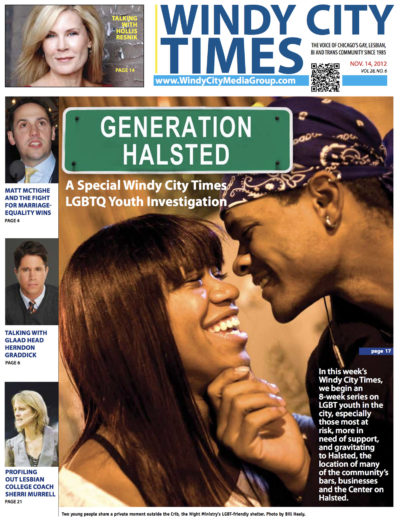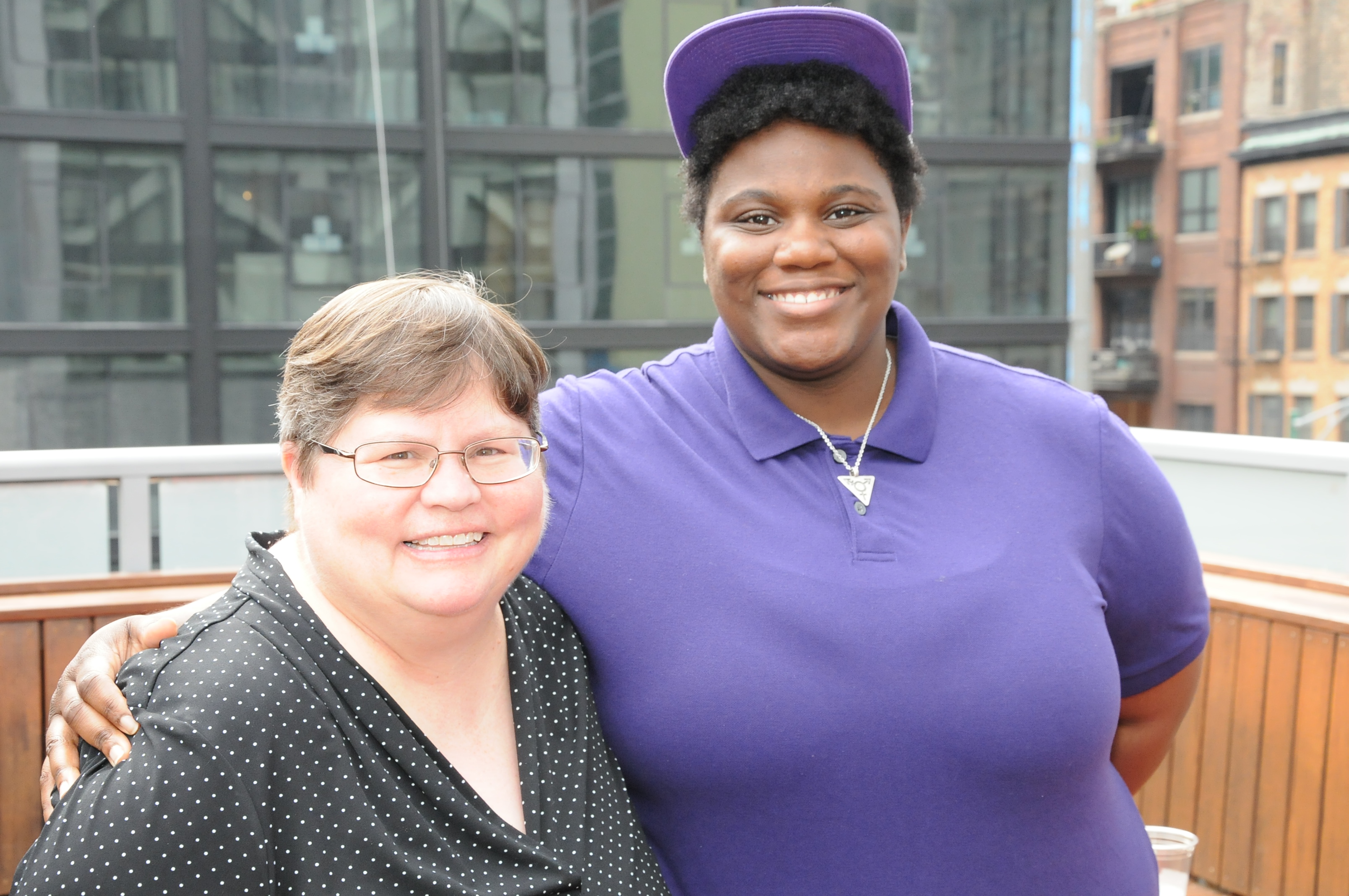On a below-zero night in Chicago, those who are homeless battle the elements while they carry with them everything they own. That could be extra clothes, photos, medications or the donated cell phone they use as their lifeline to a network of supports. If they are in school, as are tens of thousands of youth who are homeless, they also may be carrying books.
One such former youth, Breezy Connor, wrote a passionate poem about the choices she made during a frigid winter. When the shelters were full, she walked the streets until her feet could go no more. She had to make choices, between the heavy backpack with books and the one with her other belongings.
Her poem, delivered during the 2014 summit on homeless LGBTQ youth organized by my newspaper Windy City Times, inspired the creation of the Chicago Youth Storage Initiative (CYSI), an unusual mix of philanthropists, youth, activists and myself, a newspaper publisher and editor. We were led by the Pierce Family Foundation.
As a journalist and publisher in LGBTQ media, I have been both an observer and active participant in my community. I realize that can be a controversial statement, but my philosophy—to get engaged where I can, to fill in gaps, but to also amplify the work of the rest of the community—is rooted in my early years as a journalist.
I started as a reporter at GayLife newspaper in 1984, when just being an openly gay journalist was seen as being an activist. There were only a handful of openly gay reporters or editors at mainstream newspapers. But that was about to change, in part because of these ominous four letters: AIDS.
As a journalist and publisher in LGBTQ media, I have been both an observer and active participant in my community
The year I started writing for the gay press, Chicago had fewer than 100 diagnosed cases of AIDS. The escalation happening on the East and West coasts traveled swiftly to the Midwest. During the peak years of HIV/AIDS deaths, many of our own employees died of complications from the disease. We attended funerals, protests, City Council hearings, and countless meetings as engaged partners in our community.
I was trained as a journalist, but because as a young reporter I was on the front lines of a community under siege, I learned quickly that there are times when it must be all hands on deck—including the journalists.
But even though I have operated on this philosophy, I have also implemented it very stingily. It is usually something that is large, coalition-based, with a wide range of leadership and organizational involvement.
For example, I volunteered at the board level for seven years when our community hosted Gay Games VII in 2006; I viewed sports as a way to change the stereotypes and level of visibility of LGBTQs in the city and suburbs.
I did this again after the push for marriage equality was stalling in our state; I created the 2013 March on Springfield for Marriage Equality and recruited dozens of organizations and leaders to help bring 5,000 people to the event.

This youth storage work came from this same spirit.
In 2012, there were racially charged discussions in Boystown about unaccompanied young people, most of them African Americans, hanging out on Halsted Street, a heavily white area dominated by gay bars. Windy City Times, a weekly LGBTQ newspaper I co-founded in 1985, covered heated meetings where racism was high and empathy was low. We wanted to dig deeper.
For three months, a team of reporters and photographers investigated the issue, sometimes staying overnight with the youth. The eight-week multi-media series, “Generation Halsted,” included youth-recommended solutions.
The series won local and national awards, and although interested and concerned, for service agencies already strapped for time and money adding new tasks was almost impossible. So we brought everyone to the table for the Windy City Times Summit on Homeless LGBTQ Youth in 2014.
That summit paid about 100 youth experiencing housing instability to attend and share ideas. The second day included staff at nonprofits and government agencies. The final day we reported out to media and funders. A team of us, in part organized into the new Pride Action Tank, have been actioning those ideas, including a tiny home competition, conference, and pilot community.
Which brings us to the Chicago Youth Storage Initiative. An estimated 12,186 young people experience homelessness in Chicago on a nightly basis. Though the project started out of the LGBTQ summit, CYSI has always been about lifting up all youth, inclusive of LGBTQs, who make up anywhere from 20-40 percent of the youth homeless population. In addition to placing 755 storage devices into 22 agencies, VYSI worked with Google to create safe access to online storage.
Thus far, the impact of CYSI’s efforts have been: units accessed 31,452 times; 1,095 unduplicated users; 12,015 nights of secure storage. Other outcomes: Decreased stigma, improved relationships, increased safety, increased stability, and improved wellness.
CYSI has passed the torch for the work and future management of the project to LYTE Collective on Chicago’s South Side. This brings my formal role with the project to an end.
But this was never just about storage. This was a chance to listen to the youth, report on their issues, and work collaboratively with our city’s funders and nonprofits to create solutions—so we were not writing the same story again next year.



